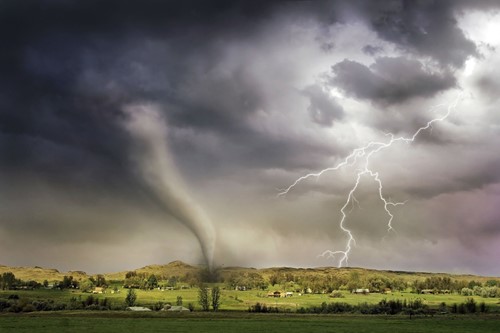
With wind speeds of over 300 miles per hour, a tornado can be devastating. Luckily, meteorologists can predict them accurately enough to give you time to get to safety. Before a tornado comes, however, it's important to be prepared. Here are some tips for being tornado-ready:
Know Where to Go
Under ground is the safest place to go during a tornado, whether in a basement or other shelter. However, it's still important to know other safe spots at home, work or school in case you can't get to a basement. Identify a backup tornado safety spot away from windows on the ground floor of the building. Interior rooms with multiple walls between you and the wind are best to shelter in.
Have Emergency Supplies
Disaster preparedness should always include an emergency kit to keep you safe if you're stuck or stranded by a storm. Create a tornado kit with enough water for each member of the household (including pets) to last at least three days. Other things to include in your tornado emergency kit are flashlights, spare batteries, blankets and copies of certain important documents.
Another key thing to include in your emergency kit is a battery-powered radio. You can use the radio to monitor the situation through official announcements from your community and know when the storm is safely passed.
Understand the Warnings
There is a key difference between a tornado "watch" and a tornado "warning." A tornado watch means that weather conditions are prime for tornado development. This doesn't mean you need to take shelter right away, but that you should stay alert and double-check your emergency supplies.
A tornado warning means a tornado has been confirmed in the area. This means it's time to take shelter. Familiarize yourself with how your area communicates these warnings, too. Some communities use sirens, but you may also receive emergency notifications on your smartphone or over broadcast television.
If you live in a region prone to tornadoes, the best thing you can do to stay safe is to prepare. Keep these tips in mind when considering your emergency plans.
About the Author

